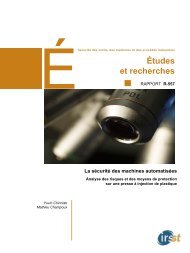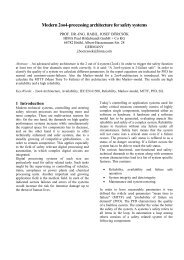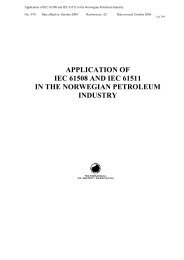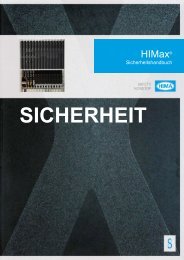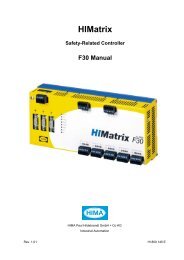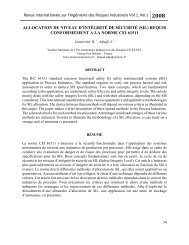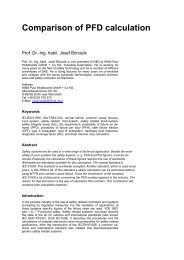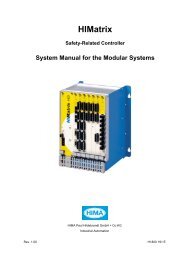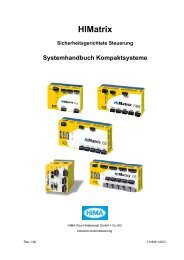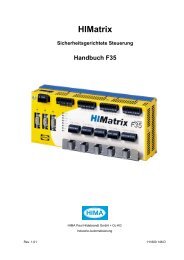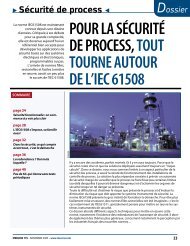Functional Safety
Functional Safety
Functional Safety
You also want an ePaper? Increase the reach of your titles
YUMPU automatically turns print PDFs into web optimized ePapers that Google loves.
White Paper<br />
Tino Vande Capelle, Dr. M.J.M. Houtermans<br />
<strong>Functional</strong> <strong>Safety</strong>: A Practical Approach<br />
for End-Users and System Integrators<br />
4.1 Selecting Hardware According to IEC 61511<br />
Having two standards to deal with in order to determine the system architecture does not<br />
make it easier for the end-user or system integrator. Many end-users and system integrators<br />
do not realize that even if they deal with the IEC 61511 standard that some subsystems of<br />
the safety functions still need to comply with the IEC 61508 standard. Figure 2 gives<br />
guidance. From this figure it becomes clear that we need per definition to follow IEC 61508 if<br />
we want to apply new hardware, which has not been developed yet. For any hardware<br />
which meets the IEC 61511 requirements for proven in use or has been assessed according<br />
to the requirements of IEC 61508 we can continue to follow the IEC 61511 requirements<br />
and particular Table 3 and 4. IEC 61511 defines proven in use as follows:<br />
“When a documented assessment has shown that there is appropriate evidence, based on<br />
the previous use of the component, that the component is suitable for use in a safety<br />
instrumented system”<br />
New hardware<br />
development?<br />
Follow<br />
IEC 61508-2<br />
Hardware<br />
Use hardware<br />
based on<br />
proven in use?<br />
Follow<br />
IEC 61511<br />
Use hardware<br />
developed<br />
and assessed<br />
according to<br />
IEC 61508?<br />
Follow<br />
IEC 61511<br />
Fig. 2. Which Standard to Follow: IEC 61508 or IEC 61511?<br />
Although proven in use is typically something that only an end-user can determine the<br />
suppliers of safety components will do everything to convince end-users and system<br />
integrators that their products are proven in use. The evidence though that needs to be<br />
delivered in order to “prove” proven in use is not so easy to accumulate:<br />
� Manufacturers quality, management and configuration management systems<br />
� Restricted functionality<br />
� Identification and specification of the components or subsystems<br />
� Performance of the components or subsystems in similar operating profiles and<br />
physical environments<br />
� The volume of the operating experience<br />
� Statistical evidence that the claimed failure rate is sufficiently low<br />
HIMA <strong>Functional</strong> <strong>Safety</strong> Consulting Services Page 13



